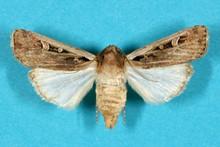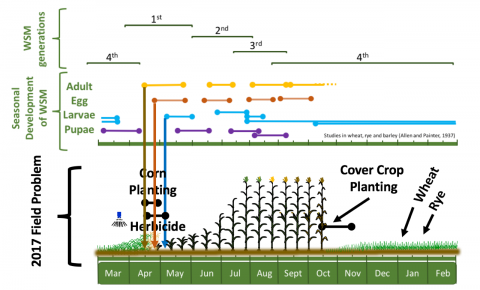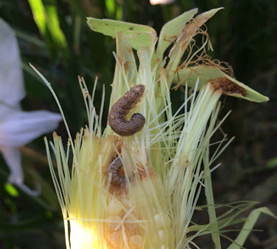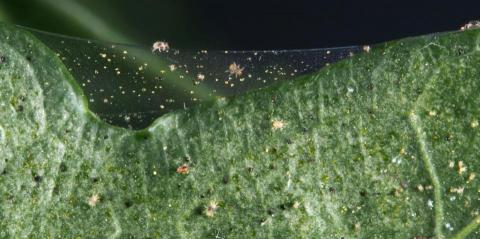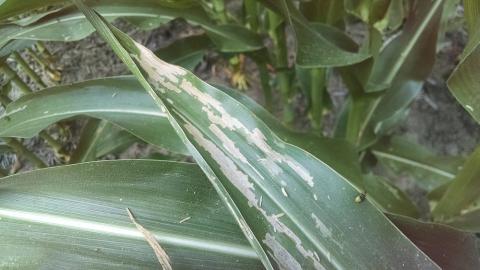Western Corn Rootworm Beetles Emerging, Time to Scout
June 27, 2018
Corn rootworm beetles started emerging in southeast and south central Nebraska and scouting is recommended. An average of 5-10 beetles per ear usually can seriously affect pollination.
Scout Corn and Soybean for Japanese Beetles
June 25, 2018
Japanese beetles are emerging in eastern Nebraska and will continue to emerge for the next couple of weeks. As numbers will be highest in field margins, growers are advised to scout across the whole field before determining the need for treatment.
Using Degree-Day Models to Predict Western Bean Cutworm Flights
June 21, 2018
By using a degree-day model, growers can account for the effect of temperature on insect development and approximate when certain insect stages will occur. See predicted cutworm flights and recommended scouting periods for 14 Nebraska locations.
Wheat Stem Maggot Adult Monitoring: A Pest of Cover Crop-to-Corn Transitions
April 25, 2018
This article looks at wheat stem maggots in cover crops-to-corn transitions, including their biology, risk for damage to early season corn, and what to look for this spring.
Handy Bt Trait Table Updated for 2018 Corn
January 31, 2018
The Handy Bt Trait Table, which lists the types of Bt hybrids present for all commercialized corn, has been updated for 2018. Now in its 15th year, the table has become the standard authoritative reference to Bt toxins in corn.
Researching What Could be Tomorrow's Problem Corn Ear Pest
September 13, 2017
Nebraska and Brazilian entomology researchers have joined to study current and expected corn insect pests and how management strategies can be changed to address population shifts.
Spider Mite Reports Increasing
July 28, 2017
Spider mite populations are increasing in Nebraska. Fields should be scouted and the species correctly identified to provide proper management. Population levels should also be considered when treating fields with other insecticides that may knock out all natural predators, leading to population explosions of spider mites.
Time to Scout for Western Corn Rootworm Beetles
June 29, 2017
Western corn rootworm beetles began emerging in southeast and south central Nebraska this week. Before corn silks emerge, they're apt to feed by scraping the surface tissue, leaving a white parchment-like appearance.


